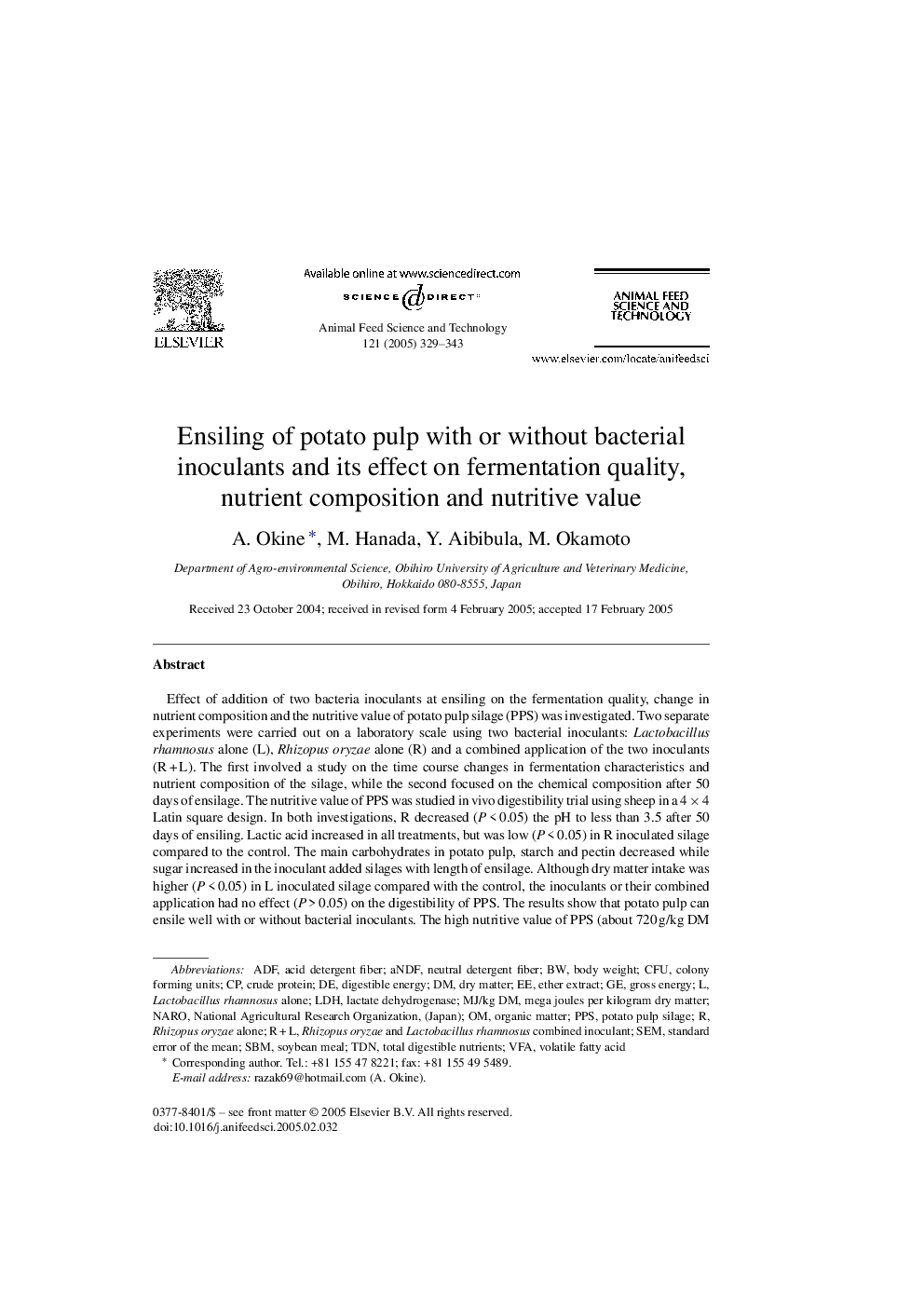| Article ID | Journal | Published Year | Pages | File Type |
|---|---|---|---|---|
| 8973738 | Animal Feed Science and Technology | 2005 | 15 Pages |
Abstract
Effect of addition of two bacteria inoculants at ensiling on the fermentation quality, change in nutrient composition and the nutritive value of potato pulp silage (PPS) was investigated. Two separate experiments were carried out on a laboratory scale using two bacterial inoculants: Lactobacillus rhamnosus alone (L), Rhizopus oryzae alone (R) and a combined application of the two inoculants (RÂ +Â L). The first involved a study on the time course changes in fermentation characteristics and nutrient composition of the silage, while the second focused on the chemical composition after 50 days of ensilage. The nutritive value of PPS was studied in vivo digestibility trial using sheep in a 4Â ÃÂ 4 Latin square design. In both investigations, R decreased (PÂ <Â 0.05) the pH to less than 3.5 after 50 days of ensiling. Lactic acid increased in all treatments, but was low (PÂ <Â 0.05) in R inoculated silage compared to the control. The main carbohydrates in potato pulp, starch and pectin decreased while sugar increased in the inoculant added silages with length of ensilage. Although dry matter intake was higher (PÂ <Â 0.05) in L inoculated silage compared with the control, the inoculants or their combined application had no effect (PÂ >Â 0.05) on the digestibility of PPS. The results show that potato pulp can ensile well with or without bacterial inoculants. The high nutritive value of PPS (about 720Â g/kg DM in TDN and 13Â MJ/kg DM in digestible energy) does indicate that PPS could be used as an energy source in ruminant diets.
Keywords
ADFTDNLactobacillus rhamnosusSBMaNDFVFACFURhizopus oryzaePpsNutritive valuevolatile fatty acidacid detergent fiberDigestible energygross energystandard error of the meanether extractneutral detergent fiberlactate dehydrogenaseLDHorganic matterdry matterSEMcolony forming unitsbody weightPotato pulpcrude proteinTotal digestible nutrientsSoybean mealFermentation quality
Related Topics
Life Sciences
Agricultural and Biological Sciences
Animal Science and Zoology
Authors
A. Okine, M. Hanada, Y. Aibibula, M. Okamoto,
